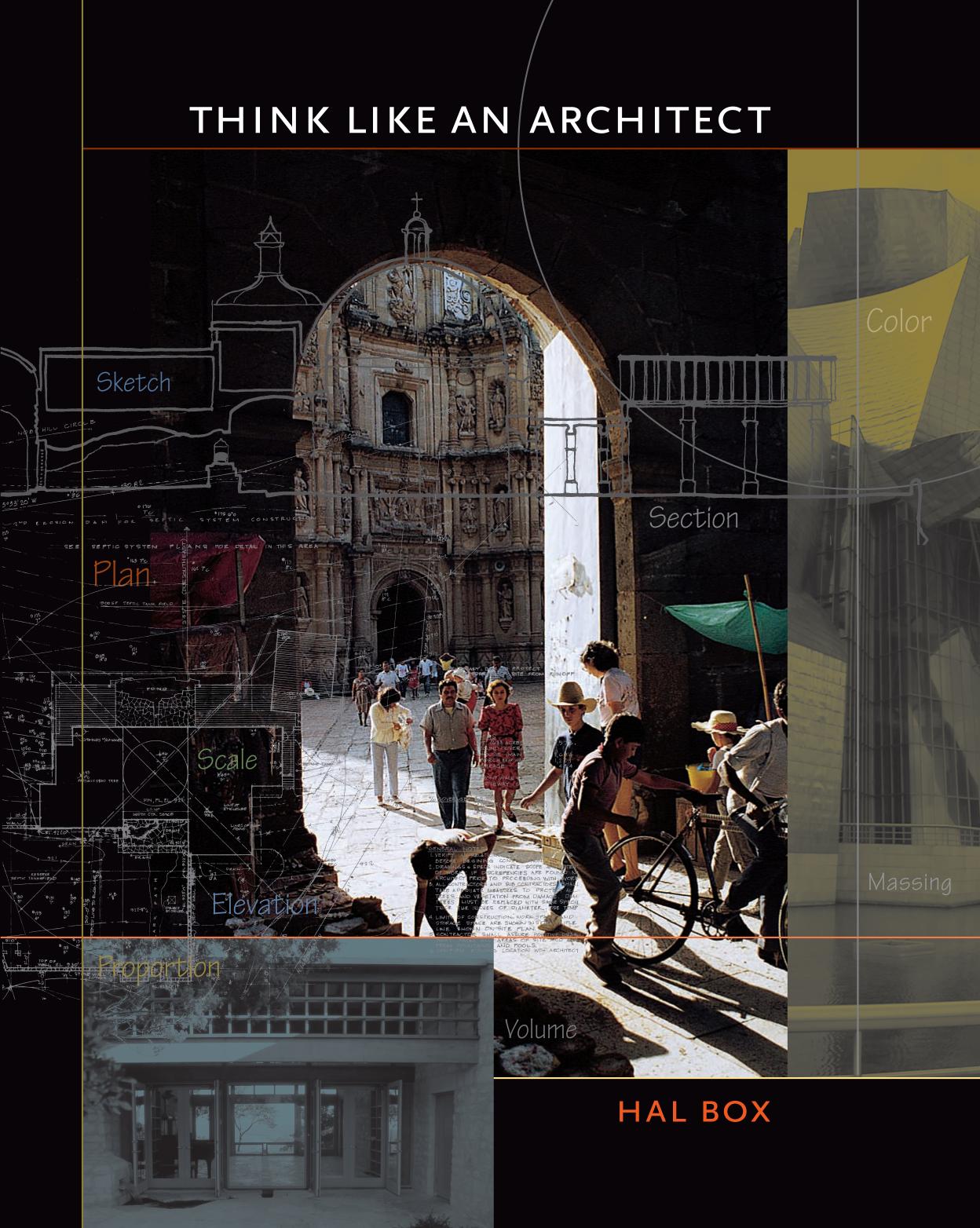Think Like an Architect by Hal Box

Author:Hal Box
Language: eng
Format: epub, pdf
Publisher: University of Texas Press
Published: 2007-03-18T04:00:00+00:00
Distant view of skyline from the site for the Nob Hill House. Austin, Texas.
Topographic plot and site plan of the Nob Hill House, by author, Austin, Texas, 1992.
Being both the architect and half of the client at Nob Hill, I can make the description of my design process simpler than it would otherwise be. For here I’m free to use an open, ad hoc process, workable only for small buildings that don’t involve a lot of clients, users, and consultants. It involves simply thinking through all of the functional factors and design variables, using what I imagine to be common sense along with experienced aesthetic judgment after inserting the realities discussed in the preceding chapter. Then it involves rethinking the design, again and again and again, until it feels “just right.” I hope I have persuaded you that good design is labor-intensive—successful only when a clear, appropriate, and exciting concept can be developed.
My approach to developing the architectural concept for this program and place seems simple on the surface. On the half-acre Nob Hill site, there’s a grove of live oaks and a heart-filling view southeast, showcasing the shining Colorado River and the city skyline set in a sea of green trees. It’s obvious that the grand view will be dominant in any concept and that the drama in the place will come from celebrating the view. Once I arrive at a promising concept, I make a sketch that depicts it, as I understand it, and pin it up on the wall in front of my desk. I then work toward that concept as the objective. If I change the concept for what I think is a better one, I change the sketch in front of me. It’s the target at which I’m aiming.
When you think about how to develop an architectural concept, know that it may take days of study, reading about the place, exploring its physical and cultural history, and of course, pondering the way you want to live there. I build the visual information in my head using all kinds of visuals—contour maps, aerial photos, photos of the surroundings, and photos with the new building mass sketched in or simply with a drawing glued onto the photo. Photoshop makes images that can do wonders to help you visualize and assess outcomes. Color copies, cut and pasted, also help in visualization, both for you and anyone else involved in the project. Conceptual ideas expressed in words help capture the idea, too. I try to abstract the major elements to find an obvious concept so fitting that it seems inevitable. I go to the library to look at my favorite buildings and seek out the latest ideas in journals to look for precedents that will inspire me—the opposite approach from the way I was taught as a Modernist (“Begin with no preconceptions”).
With these thoughts in mind, I walk the site slowly to assimilate the place, to discover and to map all the assets of this special piece of the world.
Download
This site does not store any files on its server. We only index and link to content provided by other sites. Please contact the content providers to delete copyright contents if any and email us, we'll remove relevant links or contents immediately.
Kathy Andrews Collection by Kathy Andrews(11319)
The remains of the day by Kazuo Ishiguro(8378)
Paper Towns by Green John(4786)
Spare by Prince Harry The Duke of Sussex(4782)
Industrial Automation from Scratch: A hands-on guide to using sensors, actuators, PLCs, HMIs, and SCADA to automate industrial processes by Olushola Akande(4590)
The Body: A Guide for Occupants by Bill Bryson(4578)
Be in a Treehouse by Pete Nelson(3643)
Harry Potter and the Goblet Of Fire by J.K. Rowling(3604)
Machine Learning at Scale with H2O by Gregory Keys | David Whiting(3602)
Never by Ken Follett(3516)
Goodbye Paradise(3442)
The Remains of the Day by Kazuo Ishiguro(3131)
Into Thin Air by Jon Krakauer(3125)
The Cellar by Natasha Preston(3073)
The Genius of Japanese Carpentry by Azby Brown(3033)
Fairy Tale by Stephen King(2938)
Drawing Shortcuts: Developing Quick Drawing Skills Using Today's Technology by Leggitt Jim(2936)
120 Days of Sodom by Marquis de Sade(2935)
The Man Who Died Twice by Richard Osman(2801)
